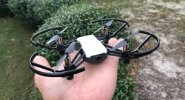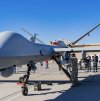So with the new FAA regulations, can anyone tell me how to determine what classification the Mavic Air 2 is? Noob pilot and trying to get as much info as I can to ensure both safe and legal flying.
Category 1: A Category 1 drone represents “a low risk of injury” to humans and therefore weighs 0.55 pounds (0.25 kg) or less including everything attached to the drone from takeoff to landing. Furthermore, a Category 1 drone cannot have “any exposed rotating parts that would lacerate human skin,” and whatever kind of protection that implies must not fall outside the weight limit. If your drone meets both of these criteria, there’s no need to do anything else about it.
Category 2: A Category 2 drone is the next step up, and since we’re now out of the “low risk of injury” category, the FAA will require a declaration of compliance from “anyone who designs, produces, or modifies a small unmanned aircraft” in this category. For Category 2, this declaration has to show that the drone “must not be capable of causing an injury to a human being that is more severe than an injury caused by a transfer of 11 ft-lbs of kinetic energy from a rigid object,” and the declaration must be approved by the FAA. Category 2 drones must also incorporate the same kind of laceration protection as Category 1, although one of the more interesting comments on the ruling came from Skydio, which asked whether a software-based safety system that could protect against skin laceration would be acceptable. The FAA said that’s fine, as long as it can be demonstrated to be effective through some as-yet unspecified process.
Category 3: A Category 3 drone is just the same at Category 2, except bigger and/or faster, and it “must not be capable of causing an injury to a human being that is more severe than an injury caused by a transfer of 25 ft-lbs of kinetic energy from a rigid object.” Laceration protection also required.
Category 4: If you think your drone is safe to operate over people but it doesn’t fit into one of the categories above, you can apply to the FAA for an airworthiness certificate, which (if approved) will let you fly over people with your drone (sometimes) without applying for a waiver.
Thanks!
Category 1: A Category 1 drone represents “a low risk of injury” to humans and therefore weighs 0.55 pounds (0.25 kg) or less including everything attached to the drone from takeoff to landing. Furthermore, a Category 1 drone cannot have “any exposed rotating parts that would lacerate human skin,” and whatever kind of protection that implies must not fall outside the weight limit. If your drone meets both of these criteria, there’s no need to do anything else about it.
Category 2: A Category 2 drone is the next step up, and since we’re now out of the “low risk of injury” category, the FAA will require a declaration of compliance from “anyone who designs, produces, or modifies a small unmanned aircraft” in this category. For Category 2, this declaration has to show that the drone “must not be capable of causing an injury to a human being that is more severe than an injury caused by a transfer of 11 ft-lbs of kinetic energy from a rigid object,” and the declaration must be approved by the FAA. Category 2 drones must also incorporate the same kind of laceration protection as Category 1, although one of the more interesting comments on the ruling came from Skydio, which asked whether a software-based safety system that could protect against skin laceration would be acceptable. The FAA said that’s fine, as long as it can be demonstrated to be effective through some as-yet unspecified process.
Category 3: A Category 3 drone is just the same at Category 2, except bigger and/or faster, and it “must not be capable of causing an injury to a human being that is more severe than an injury caused by a transfer of 25 ft-lbs of kinetic energy from a rigid object.” Laceration protection also required.
Category 4: If you think your drone is safe to operate over people but it doesn’t fit into one of the categories above, you can apply to the FAA for an airworthiness certificate, which (if approved) will let you fly over people with your drone (sometimes) without applying for a waiver.
Thanks!












